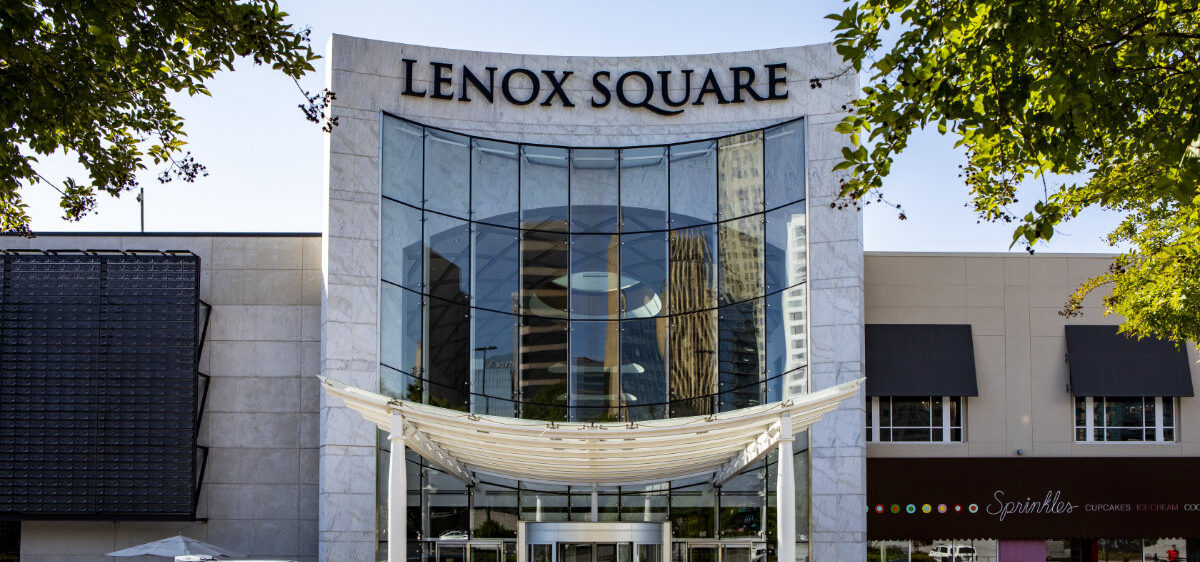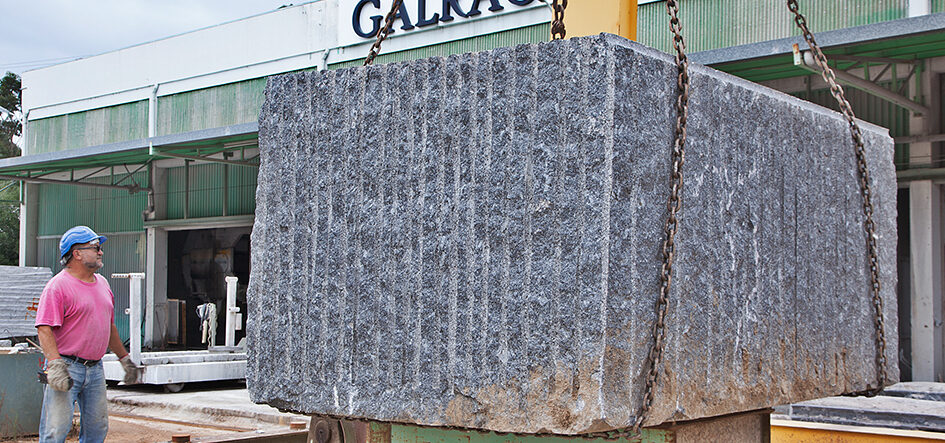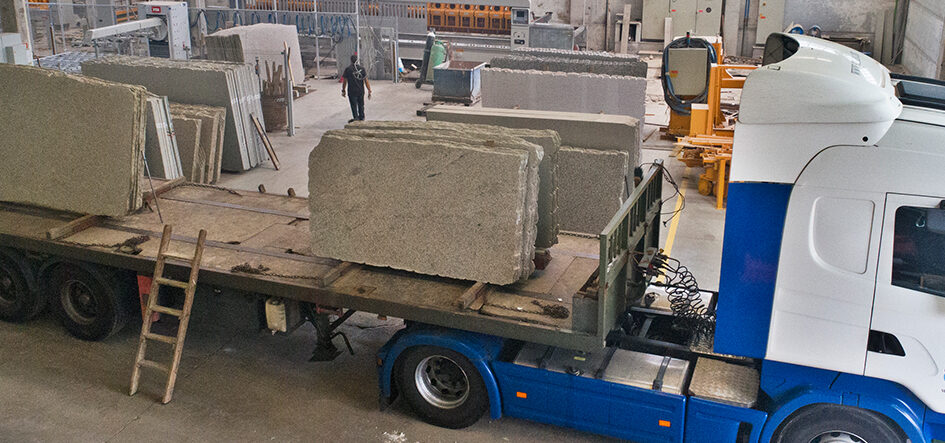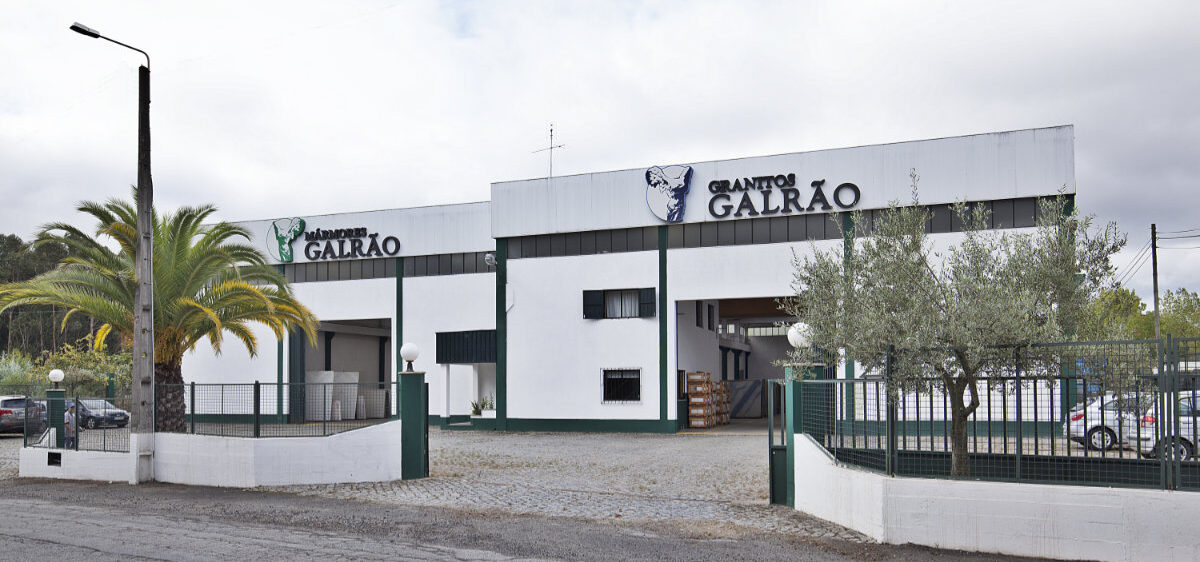The ‘Dueto’ collection, a collaboration between designers MONICS + VIEIRA, represents the fusion of two complementary visions. This partnership not only reinterprets the use of marble but also challenges traditional conventions, bringing forth the essence of the material through shapes that evoke fluidity and connection.
The project goes beyond a mere aesthetic creation; it symbolizes the union of ideas and the exploration of new possibilities in furniture design. ‘Dueto’ is a testament to how respect for legacy and innovation can coexist, crafting pieces that speak of tradition and the future in harmonious balance.
Showcased at Marmomac, this collection emphasizes the importance of staying true to the essence of materials while daring to explore new frontiers. It is a celebration of collaborative creativity, where each piece not only adorns but tells a story of unity, respect, and shared vision.

How did your career in design begin? What initially attracted you to the industry, and what were your first influences?
TANIA: My career in design began at an early age, and my biggest influence has always been my grandfather, who first sparked my interest in the field. About 10 years ago, while still studying, I started working as an interior designer. I quickly became fascinated by how people’s behavior and mindset can change depending on their surroundings. This curiosity led me to explore the impact of furniture on interior spaces. To deepen my understanding, I studied in Milan, where I focused on product design, learning how furniture is made, why certain design principles exist, and when it’s important to break them. It was there that I met Rafaela. After finishing our studies, I moved to Amsterdam and worked at Marcel Wanders studio for a few years. Eventually, I returned to Milan, reconnected with Rafaela, and we discovered we shared the same vision for the interior design industry. Our mutual passion for design and product development naturally led us to embark on this journey together, driven by shared values and a common vision of how design can foster a more harmonious world
RAFAELA: My journey is quite similar. I started in graphic design and communication, which I studied in Brazil, where I’m from. Like Tania, I began working immediately, over 10 years ago. I eventually decided to move to Milan to study product and industrial design, and that’s where Tania and I met during our master’s program at the Politecnico, focusing on Furniture Manufacturing. Throughout my career, I worked in studios and companies that aligned with my values, always exploring the connections between design, psychology, nature, and technology. Tania and I were already friends, sharing a passion for design and frequently discussing industry trends and challenges. Over time, we exchanged experiences and ideas, and one day we decided to join forces and see where this partnership could take us.
TANIA: In a way, we were already collaborating, but at a certain point, we decided to make it official.

With your vast experience across different projects, which ones stand out as the most memorable for you?
TANIA: For me, as an interior designer, the most valuable project is always the one I’m currently working on. However, a defining moment in my career was designing the interior of my former boss Marcel Wanders’ private residence. It was an incredible experience when he reached out to me after I had left his studio to work on his home. Being entrusted with such a personal space was both an honor and a unique opportunity. Collaborating with him to create a concept for a personal sanctuary—a place for peace and self-reconnection—was profoundly inspiring. The goal was to design a space that allows you to leave behind the noise and problems of the outside world, where you can truly find tranquility. This project holds a special place in my heart.
RAFAELA: I have many projects I’m proud of professionally, but some resonate more deeply due to the connections we create with clients. One standout project involved traveling to India to collaborate with a group of women who produce textile carpets in their factory. The entire operation is led by women, and their circular production model supports the local community. This was a graphic communication project for a non-profit organization, and the experience was truly magical for me. Witnessing how they conveyed their story in such a powerful way, knowing it would reach and impact many people, was incredibly rewarding. The project also underscored sustainability efforts in a country facing significant challenges. Although this happened a few years ago, it remains one of my favorites.
What does each of you bring to the partnership that makes it so special and productive? How would you describe the working dynamic between the two of you?
TANIA: A sense of humor! (laughs)
RAFAELA: Absolutely, humor and a lot of mutual support. We have a deep understanding of this field, and being at a similar stage in our careers helps. Whether it’s graphic design, furniture, architecture, or interiors, everything is interconnected, especially in Milan. Having someone who understands your goals and shares both the highs and lows is invaluable.
TANIA: We complement each other’s strengths and often work on the same tasks, depending on the project. When one of us needs help, the other is always there, which has built a lot of trust between us. Our working dynamic comes naturally, likely because we studied together. We were used to collaborating, and that laid the groundwork for a solid partnership. It was never something we formally discussed; it just evolved. We believe this is how women should operate in business: by trusting, supporting, and inspiring each other to continuously grow.
RAFAELA: We share similar design skills, though our visions can sometimes differ, which I think is a wonderful aspect of our partnership. It allows us to blend our ideas into something entirely new. My background leans more towards industrial design, while Tania often brings a more creative or artistic perspective. Sometimes I find myself saying, “Wait a minute!” (laughs) But this dynamic works perfectly because it helps us discover new solutions together. It’s not about either of us individually—it’s about creating something fresh and unique as a team.

As for Dueto, can you share your inspiration for this project? How would you describe the concept behind the collection?
TANIA: We’re always inspired by the idea of unity and the connection between different elements, which is central to this collection.
RAFAELA: This project emerged naturally from our collaborative process. The name ‘Dueto’ reflects duality, which mirrors our relationship as well—two distinct pieces coming together to create something new. Working with a company like Galrão naturally inspires you to engage with the materials. We were excited to collaborate with a company committed to using the finest local materials and preserving its heritage. This motivated us to create something more organic, featuring curves that offer versatility while honoring Galrão’s rich tradition. We aimed to bring our design perspective, experimenting and doing something a bit unexpected, yet remaining true to the company’s legacy. In the end, the name, concept, and everything else aligned beautifully with the dynamics of duality and the essence of Galrão.
TANIA: During the creative process, we were particularly inspired by the fact that Galrão is a family business. Its 70-year journey is a testament to unity and the realization of goals. We wanted to reflect this energy in the product itself.
RAFAELA: It’s like a puzzle where every piece fits perfectly—the heritage, the family, the collaboration with designers, and their expansion into furniture.

Can you tell us more about the process of designing and developing the pieces? What were the biggest challenges when working with marble?
RAFAELA: We approached the design with simplicity in mind. Marble can be complex, but with Galrão’s expertise in production, we knew we were in good hands—they really know how to work with it. We aimed to create something aligned with their capabilities, focusing on flat surfaces and elements that their machines could easily handle, rather than overcomplicating things (laughs). The key was finding a balance that honored our vision while considering the producer’s needs. That’s where the beauty of design lies—in integrating multiple aspects into a cohesive piece. So, we didn’t face any major challenges, right?
TANIA: The Galrão team was incredibly supportive of our vision, which helped us avoid significant obstacles. We also wanted to demonstrate that marble isn’t just about rigid, square shapes; it has a natural softness. We focused on softening the edges and incorporating curves. Initially, we were concerned about achieving those curves, but Paulo and the team did an incredible job, so any challenges were handled smoothly.
RAFAELA: There’s also a playful element to the design, featuring sliding panels and hidden details. We didn’t want to conceal the beauty of the marble—the veins are what first capture your attention. It was crucial for us that the table and all the details were perfect, allowing the viewer to appreciate both the piece and the natural beauty of the marble.
TANIA: Yes, when you look at the table, the material stands out—the sophistication of this natural heritage.
RAFAELA: And the craftsmanship! It’s amazing what can be created with this material.

From your perspective, what are the future trends in furniture design, especially regarding natural materials like marble?
TANIA: I hesitate to use the term “trends,” as they can be fleeting, especially with timeless materials like marble. I believe the future will emphasize celebrating the natural qualities of these materials, particularly their inherent purity and strength. For instance, when we cut a slab of marble, it often retains some of its raw, rough texture. I think we’ll see a greater focus on showcasing this “hardness” of the material. As technology advances, it will play a crucial role in how we work with these materials. The curves in our current project, for example, are made possible by the advanced machinery we have today. As technology continues to evolve, it will further influence our approach to material design.
In terms of color trends, I expect to see a sustained focus on earthy tones, but there may eventually be a shift toward bold, vibrant colors. These shifts often reflect broader social changes—historically, during dramatic events, people tend to gravitate toward more dynamic colors. I believe we are on the cusp of one of these shifts, if it hasn’t already begun.
RAFAELA: I completely agree, Tania. I’d like to add that we often participate in design fairs, like the recent 3 Days of Design in Copenhagen and, of course, our favorite—the Salone in Milan, which feels like our ‘New Year’ (laughs). One notable change is that people, even those outside the design and architecture industries, are becoming increasingly curious about the origins of materials. While I hesitate to label this a “trend,” as Tania mentioned, it’s fascinating to see this growing interest. People are more connected to sustainability now; they want to understand where materials come from and their life cycle. This focus was particularly strong at this year’s Salone, which heavily emphasized sustainability. It’s refreshing to see these discussions moving beyond our industry, and I hope this emphasis continues to grow.
TANIA: I’d like to add that our customers are becoming more conscious about their purchases. They’re not just looking to buy objects; they want to invest in something lasting. In today’s fast-paced consumer culture, people are increasingly discerning about what they buy and where they invest. When it comes to materials like marble, it’s incredibly reliable. Investing in a marble table means it can last for generations. You can polish it over the years, but it remains beautiful and timeless.
RAFAELA: Absolutely, marble is a timeless material.

Finally, what message would you like to leave our readers and customers about the ‘DUETO’ collection and our partnership?
TANIA: Our first message centers on the importance of respecting heritage—both the heritage of natural materials and the legacy of the company. It’s an honor for us to collaborate with a family-owned business that embodies these values. The ‘DUETO’ collection conveys a message of unity, reminding us of our interconnectedness. It encourages mindfulness in our choices and interactions, emphasizing sustainability and collaboration.
RAFAELA: Indeed, collaboration is key. The name ‘Dueto’ signifies partnership. In life, we constantly seek meaningful connections, whether in business or personal relationships. This collection represents a strong partnership—not only with Galrão but also between Tania and me. If we can inspire others to come together and forge meaningful connections, then we’ve achieved something truly special. It’s all about connection and collaboration.











































































